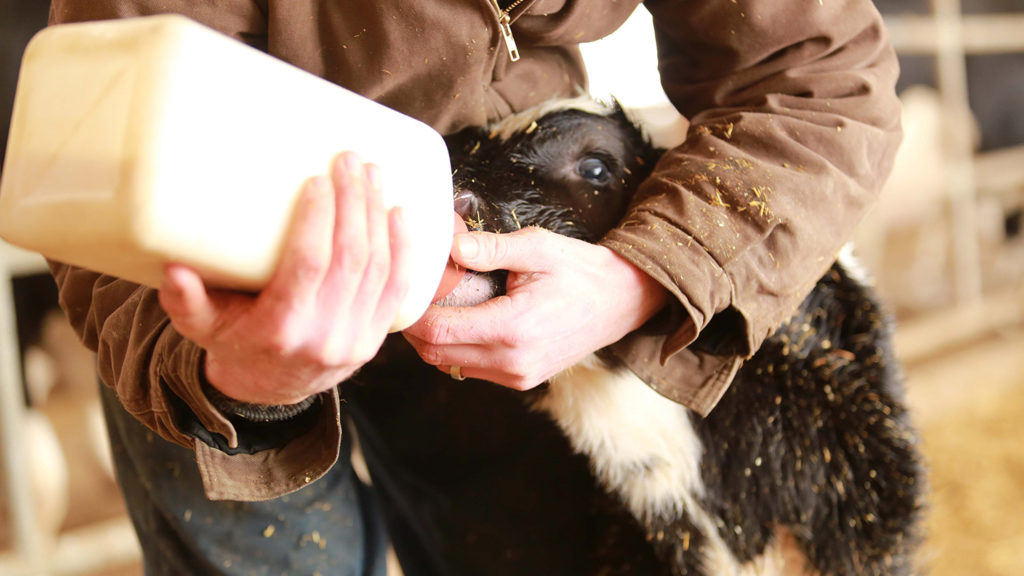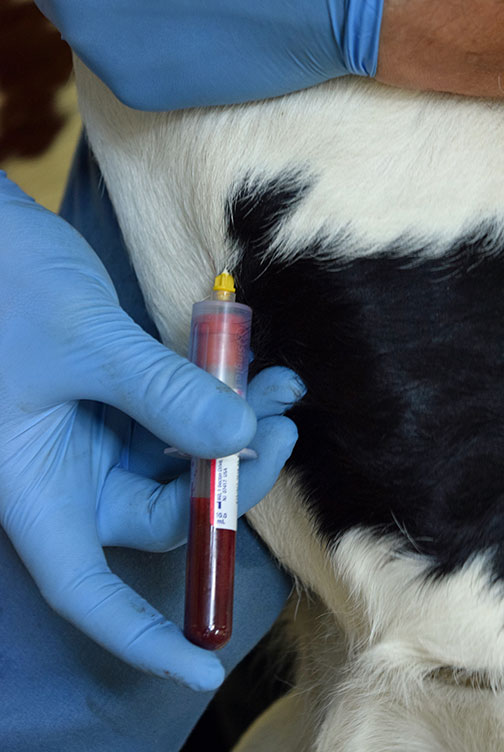Healthy Calf Conference
Follow to stay up-to-date on all Healthy Calf Conference updates. Speaker announcements, sponsorship information, registration announcements, and more.
Calves are born with an underdeveloped immune system. Key parts of a calf’s immune system are present, but at much lower levels than an adult cow. This means the newborn calf’s immune system is slower to respond to pathogens (disease causing bacteria, virus, or microorganism) and when it does, the response is weak.

The good news is that colostrum transfers antibodies from the dam to the calf. This protects the calf while it develops its own antibodies. The dam’s antibodies come from encountering pathogens in the environment or from vaccinations. Giving a dam’s colostrum to her calf helps the calf prepare for specific pathogens found on their home farm. This is a process called passive transfer of immunity.
Successful passive transfer of immunity occurs when a calf receives enough good quality, clean colostrum soon after birth. Failure of passive transfer (FPI) of immunity occurs when a calf does not receive enough colostrum, colostrum is low in quality/antibodies, or colostrum is contaminated. Passive transfer is typically measured by total protein, with a level of 5.5mg/dL or higher considered a success.
Producers can measure colostrum quality and passive transfer instantly on farm. Find out how here.
Passive transfer protects calves in the first month of life, when calves are extremely vulnerable to sickness and death. Calves that recover from illness will have lost growth, reduced growth rates, and, therefore, lower productivity as adults. When a calf dies, you lose not only the milk or meat from that animal, but also the investment in breeding and raising that calf. How much time and money have you invested in that calf? Can you afford to lose it for a preventable reason?

34.6% of calves in a recent study by Lora et. al. (2018) had failure of passive transfer. These calves were followed for the first thirty days of life (when scours is the most common problem in calves) . Calves with FPI were 24 times more likely to scour and 11 times more likely to die than calves with successful passive transfer.
If calves with successful passive transfer did get sick, disease started approximately six days later. This may not seem like long, but an extra six days for a calf to recover from birth, gain weight, and develop its immune system helps calves to more successfully overcome disease. Other studies have confirmed that calves with higher levels of passive transfer also experience milder cases of disease if they do get sick. Additionally, FPI is also related to a higher chance of needing to treat calves with antibiotics.
Ensuring calves have successful passive transfer can help make their first thirty days of life easier for both you and the calf. Reducing the chance of the all-too-common challenge of scours, improving chance of recovery, reducing antibiotic use, and maximizing productivity are benefits that make perfecting your colostrum program worthwhile. To learn about best practices for colostrum, go to www.calfcare.ca
Follow to stay up-to-date on all Healthy Calf Conference updates. Speaker announcements, sponsorship information, registration announcements, and more.
The Codes of Practice are nationally developed guidelines for the care and handling of farm animals. They serve as our national understanding of animal care requirements and recommended practices.